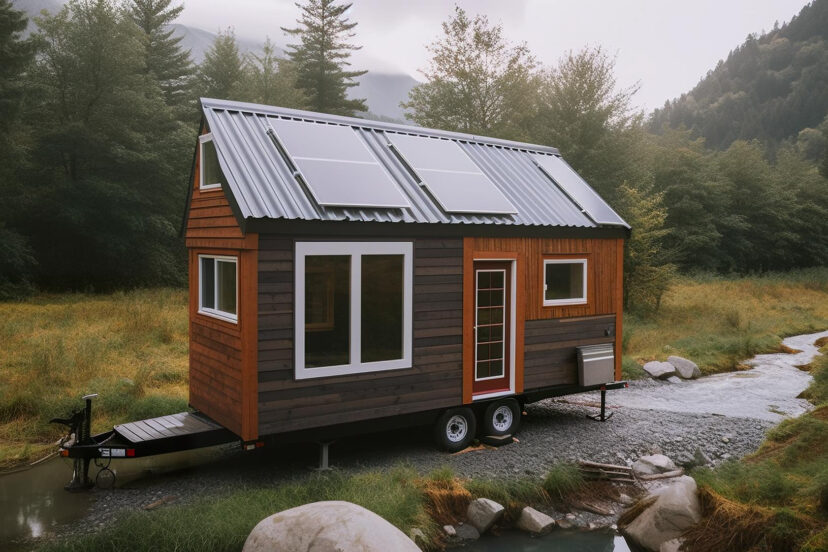Exploring Tiny Homes: A Trend in Affordable Living
In a world where simplicity and sustainability are gaining prominence, the trend of exploring tiny homes as a viable solution is capturing the imagination of those seeking an alternative to traditional housing. These compact living spaces, often ranging from 100 to 400 square feet, have evolved from a niche concept to a lifestyle choice embraced by many. In this article, we delve into the world of tiny homes, exploring the reasons behind their popularity, the challenges they present, and the unique lifestyle they offer.
The Appeal of Tiny Homes
1. Affordability and Financial Freedom:
Tiny homes come with a significantly lower price tag compared to conventional houses. This affordability not only reduces upfront costs but also translates into lower ongoing expenses. With less space to maintain and often reduced utility bills, tiny homeowners can enjoy financial freedom and allocate resources to other aspects of their lives.
2. Sustainability and Minimalism:
Embracing a minimalist lifestyle, tiny homes promote conscious living with a smaller ecological footprint. The reduced consumption of materials during construction and the limited energy requirements for heating and cooling contribute to a more sustainable way of living. For those seeking to minimize their impact on the environment, tiny homes offer a compelling solution.
3. Mobility and Flexibility:
Many tiny homes are built on trailers, allowing for mobility and flexibility in choosing a living location. This aspect appeals to individuals who value the ability to change scenery without the commitment of a permanent residence. Tiny houses enable a nomadic lifestyle or the option to relocate to different communities.
4. Customization and Creativity:
Despite their size, tiny homes can be incredibly versatile. The design of these compact spaces often involves creative use of every inch. Customization options abound, allowing homeowners to tailor their tiny dwellings to their specific needs and preferences. From multi-functional furniture to innovative storage solutions, the possibilities are limitless.
Challenges of Tiny Living
1. Limited Space and Storage:
The most obvious challenge of tiny living is the limited space. Storage can be a particular concern, requiring thoughtful organization and creative solutions to make the most of every nook and cranny. Downsizing possessions is a necessity, and individuals accustomed to spacious living might find this adjustment challenging.
2. Zoning and Regulatory Hurdles:
Tiny homes often face zoning and regulatory challenges, especially when built on wheels. Many municipalities have minimum square footage requirements for dwellings, and navigating these regulations can be complex. Finding suitable locations for tiny homes, whether in urban or rural settings, requires careful consideration of local laws.
3. Utilities and Off-Grid Living:
While some tiny homes are connected to traditional utilities, others embrace off-grid living with alternative energy sources like solar panels and composting toilets. Managing off-grid systems and adapting to a more self-sufficient lifestyle can be a learning curve for those accustomed to the convenience of centralized utilities.
4. Social Stigma and Community Integration:
Tiny living challenges societal norms about homeownership and the “bigger is better” mentality. Overcoming social stigma and integrating into communities that may have reservations about tiny homes can be a hurdle for those choosing this unconventional lifestyle.
Living Large in a Tiny Home
1. Multi-Functional Furniture:
The key to making the most of tiny spaces is investing in multi-functional furniture. From fold-down tables to convertible sofas, these pieces serve dual purposes, maximizing utility without sacrificing comfort.
2. Innovative Storage Solutions:
Creative storage solutions are a must in tiny homes. Utilizing vertical space, incorporating hidden storage compartments, and adopting minimalist organizational strategies help keep clutter at bay.
3. Off-Grid Technologies:
For those embracing off-grid living, incorporating sustainable technologies is crucial. Solar panels, rainwater harvesting systems, and composting toilets provide an eco-friendly and self-sufficient living experience.
4. Community Building:
Engaging with the tiny home community can provide invaluable support and insights. Online forums, social media groups, and local meetups connect tiny homeowners, offering a sense of camaraderie and shared experiences.
The Future of Tiny Homes
As the trend of tiny living continues to grow, innovations in design, construction, and community development are shaping the future of tiny homes. From eco-friendly materials to smart home technologies tailored for small spaces, the evolving landscape of tiny living holds promise for those seeking an alternative, sustainable, and affordable lifestyle.
In conclusion, exploring tiny homes goes beyond the physical dimensions of these compact dwellings. It’s a lifestyle choice that challenges norms, embraces sustainability, and prioritizes experiences over possessions. Whether you’re intrigued by the financial freedom they offer or inspired by the simplicity of tiny living, the world of tiny homes invites you to think big about living small.




